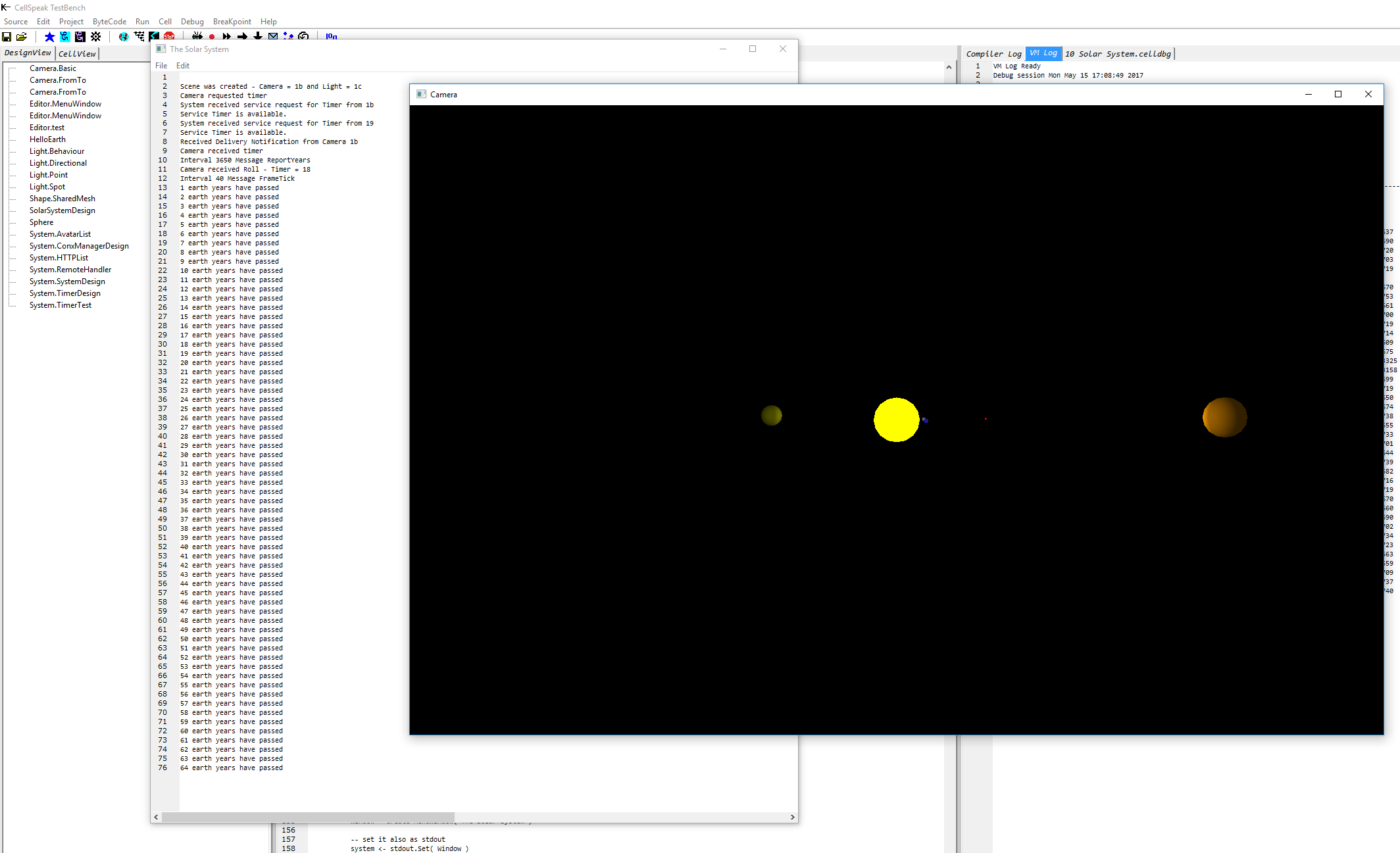The module section
The application for this tutorial is a 3D application, showing a model of the solar system where the planets orbit around the sun.
A CellSpeak project starts with a module section. The module section contains information for the compiler where to find the components of the project: the packages and the other source files that are part of the project. In a module section you can also set the version for the compiled code. The module for this project is shown to the right. There is only one source file, so there are no other source files listed here. There are three packages that are used by this application. First there is the platform package that contains the basic functionality of the system. It contains the math lib, string functions etc. but also the system related services. It is the sort of equivalent of the standard lib.
The second package contains the functionality to use DirectX 11 in CellSpeak. It contains designs for cells like Camera, Light etc, that are built around the DirectX libraries.
For both these packages, we also need the symbol definitions so they are imported as 'symbols'.
The third package is a package that allows to create an editor window. The window can be used to send strings to, but it also offers standard editing capabilities. It is a small CellSpeak wrapper around the Scintilla library. Because we only need to instantate the designs in this package, and send messages, we do not have include the symbols, so we import only the cell-designs in that packages.

